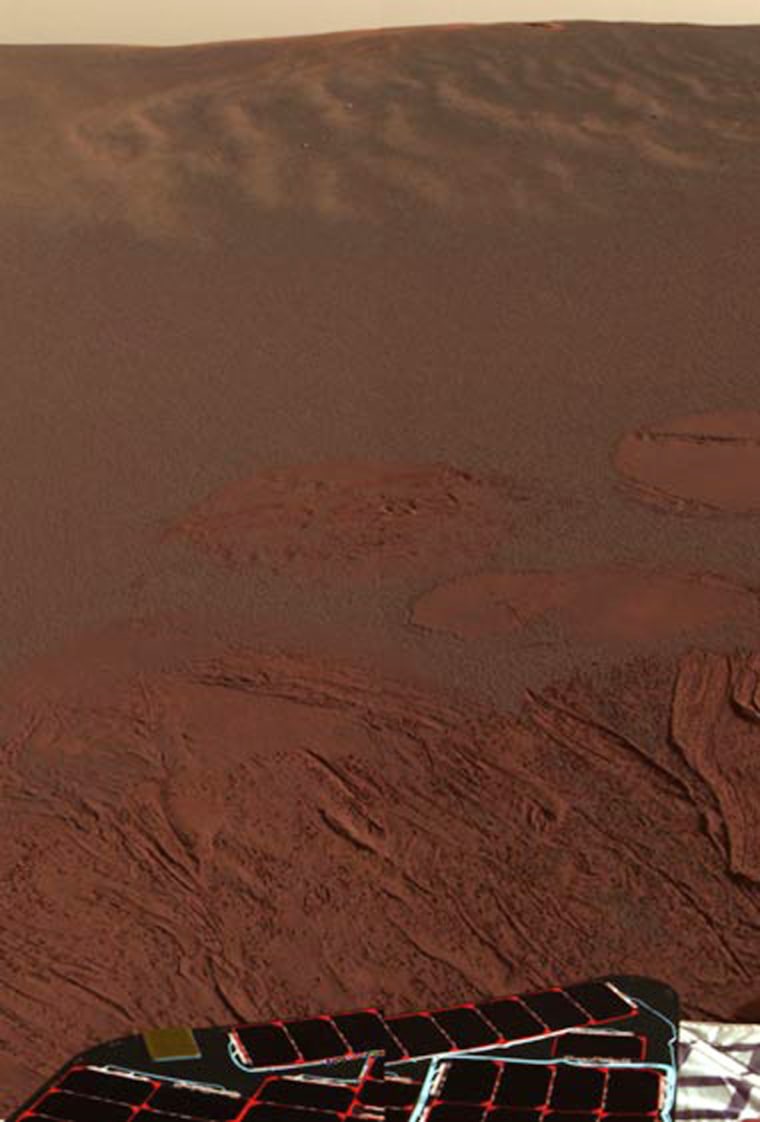Groundwater once bubbled up from beneath the surface of Mars to form transient, shallow pools before evaporating and leaving behind thick layers of salty minerals, a new computer model suggests.
The new model provides an alternative explanation for sulphate-rich “evaporite” deposits discovered on Mars’ Meridiani Planum, hailed by some scientists as the desiccated remains of an ancient ocean covering the planet’s Northern Plains.
It also suggests Mars in its early history had a globally connected groundwater system.
Earth analogy
Discovered by NASA’s Opportunity rover when it landed in Meridiani in 2004, the deposits are nearly half-a-mile deep in places. They are strewn across the entire planet, but concentrated in Meridiani Planum, a vast plain covering several hundred square miles.
The particular minerals making up the deposit can only form from iron-rich, acidic water. On Earth, such deposits are formed in places like White Sands, New Mexico or the Lake Eyre basin in Australia, where there is “a closed basin, a depression where water can flow in but not out,” explained study team member Jeffrey Andrews-Hanna of the Massachusetts Institute of Technology.
Fallen rain picks up various salts and solutes as it flows across the Earth. The mineral-infused water pools in areas like basins between mountains or the crevices between hills and then evaporates, leaving behind the salt and mineral layer.
Some scientists have pictured a similar process occurring on Mars in the distant past to create the Meridiani evaporite, but there is one obvious problem: Meridiani Planum is not an enclosed space so water would not have been able to accumulate to great depths.
“It just didn’t fit well into our terrestrial picture of evaporite,” Andrews-Hanna said.
The researchers created a computer model that simulates water flow on Mars over the course of about 500-million years. The model predicts where water would have flowed out of the Martian surface over time.
“It turned out that Meridiani was one of the few regions on the planet where the model actually predicts ground water to reach the surface and evaporate,” Andrews-Hanna told SPACE.com.
The reason has to do with Mars’ topography, he continued. Groundwater flows faster down steeper slopes than gentle ones. “So you can imagine that if you have a transition from steeper to gentler slope, the water is going to slow down, and it’ll back up and make the water rise up towards the surface,” Andrews-Hanna said. “It happens that Meridiani occurs at just such a transition.”
Nice work
Steve Squyres, lead Mars Rover Exploration scientist at Cornell University, said the new model “is a nice piece of work. It’s a nice study that goes a long way towards explaining the observations that we’ve seen.”
“What this work does is show that Meridiani Planum is unusually suited to being a place where groundwater would emerge, evaporate away and produce the kinds of deposits that we see,” Squyres, who was not involved in the study, added.
The new model doesn’t preclude the existence of a vast ocean once covering a significant part of Mars — it just suggests it didn’t extend to Meridiani.
“This is separate from the issue of there ever having been a global ocean,” Squyres said. “What this says is Meridiani is a likely place for the emergence of groundwater.”
